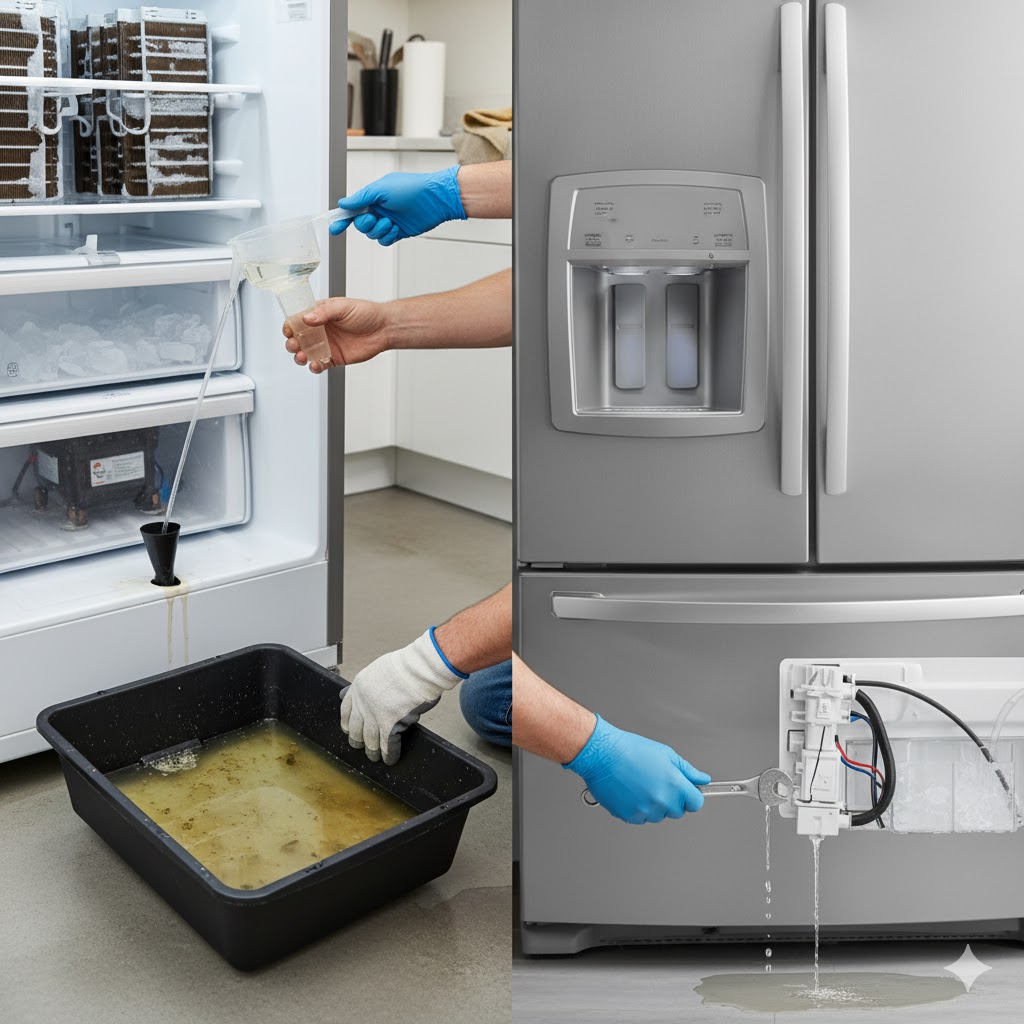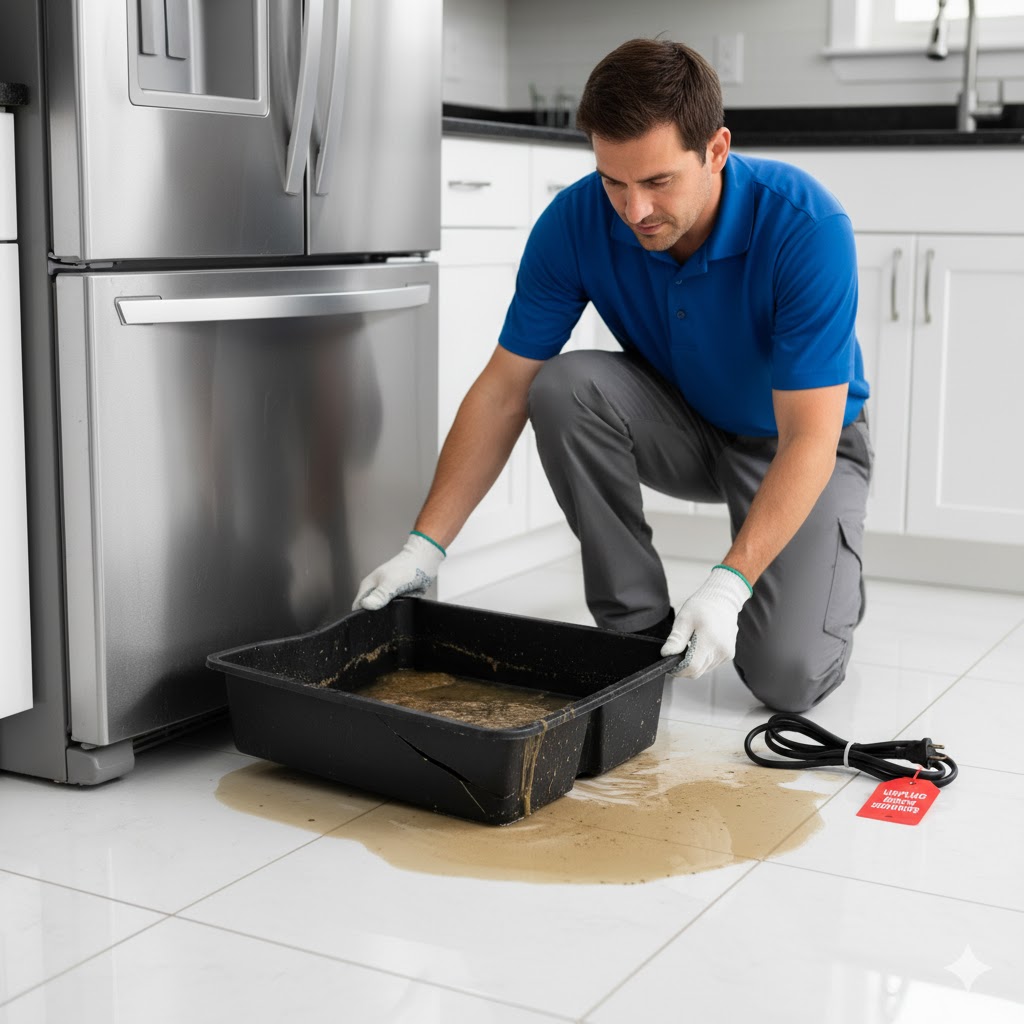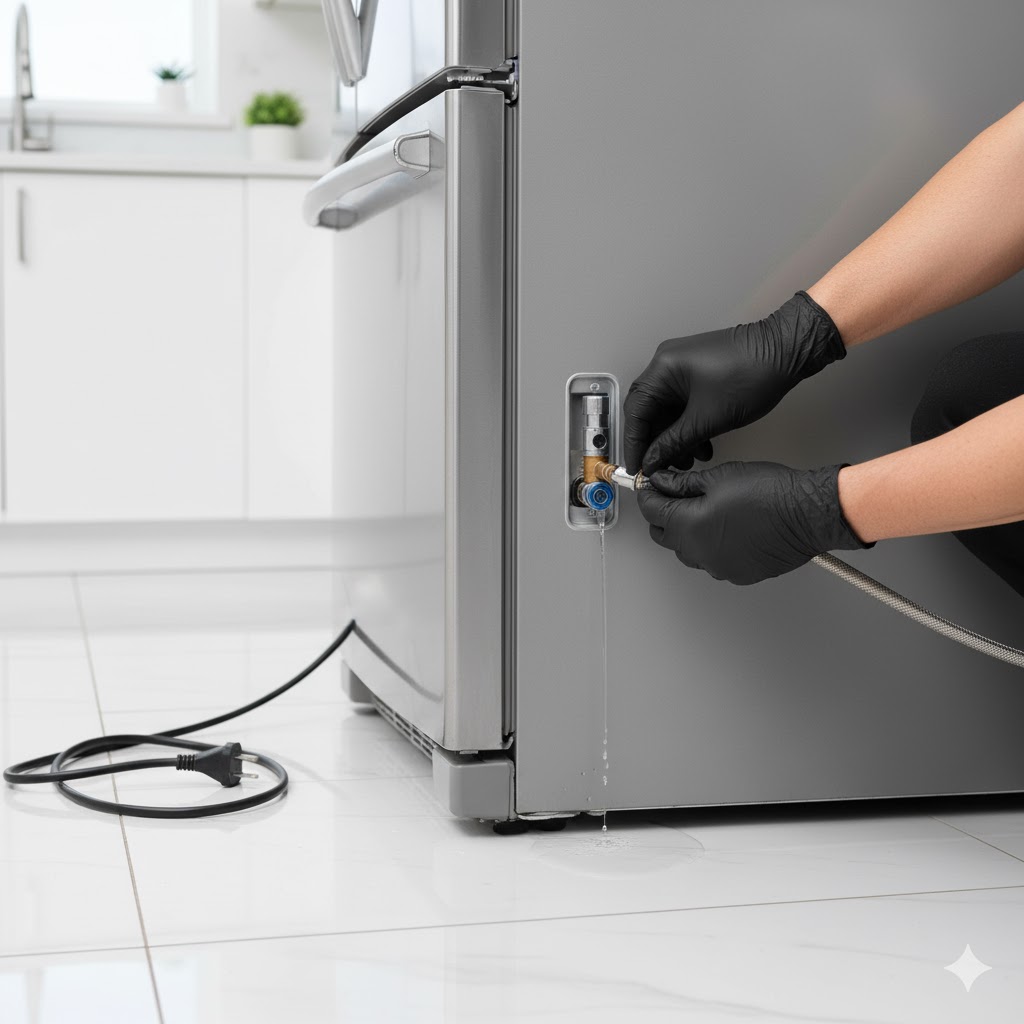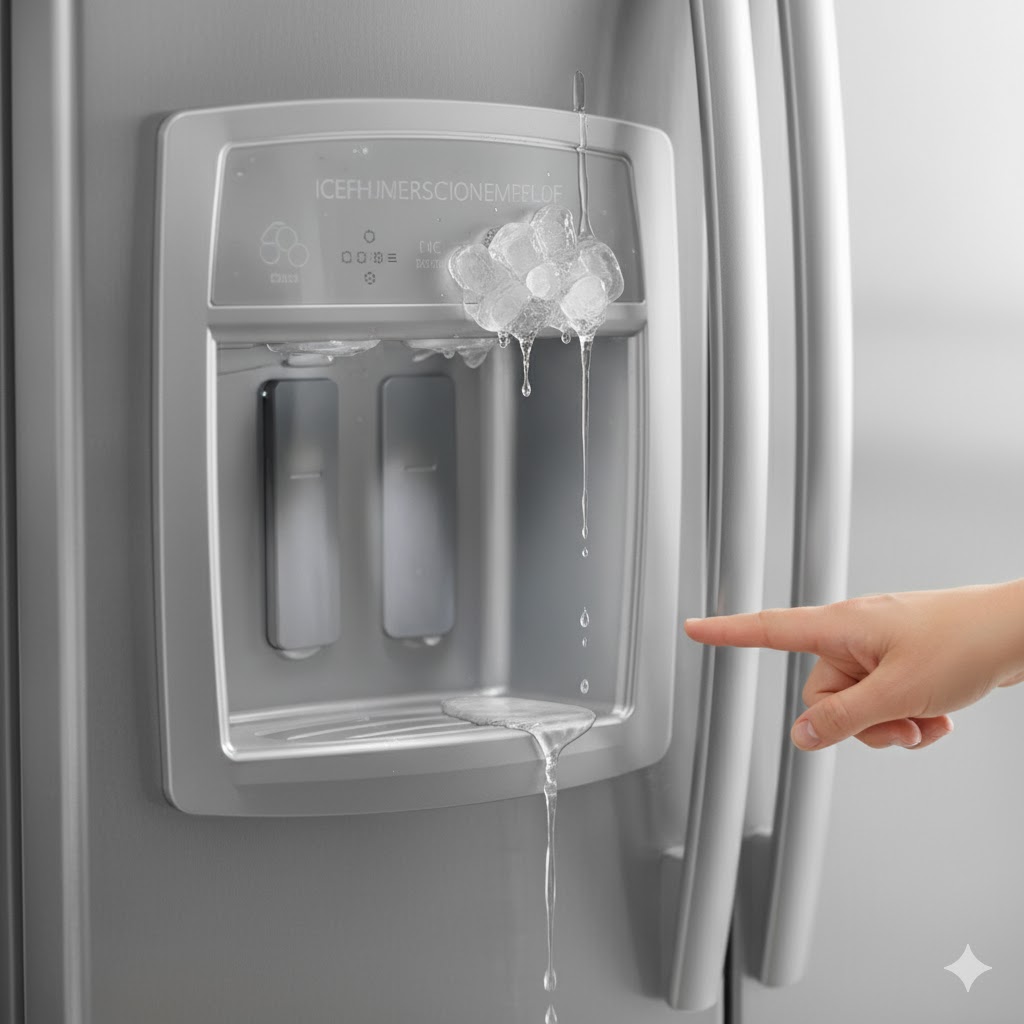Refrigerator Leak Repair: Diagnosis and Solutions
Water pooling inside your refrigerator or creating puddles on your kitchen floor is more than just an annoyance—it’s a sign that a drainage line is clogged or a component has failed. Fortunately, the source of the leak is often a simple fix.
This guide will help you identify the specific cause of your refrigerator leak and provide step-by-step solutions.
Diagnosis: Where Is the Water Coming From?
The location of the puddle is your best diagnostic tool.
| Leak Location | Most Likely Cause | Appliance Type |
|---|---|---|
| Inside the Fresh Food Section (Bottom shelf/drawer) | Clogged Defrost Drain Line. | Top-Freezer or Bottom-Freezer. |
| Under the Refrigerator (Near the back or front) | Overflowing Drain Pan. | All models. |
| Behind the Refrigerator (Near the water line connection) | Faulty Water Inlet Valve or Damaged Water Supply Line. | Water Dispensing Models. |
| Near the Ice/Water Dispenser | Faulty Dispenser Gasket or Frozen Water Line. | Door-in-Door Models. |
Solution 1: Clogged Defrost Drain Line (The Most Common Cause)
Most frost-free refrigerators use a heater to melt frost buildup in the freezer. This melted water runs down a drain tube to a pan underneath the fridge. If this drain gets blocked by food particles or ice, the water backs up and flows into your fresh food compartment.

Symptoms:
- Water pooling beneath the crisper drawers or on the bottom shelf of the refrigerator.
- Ice buildup in the back wall of the freezer compartment, near the drain hole.
The Fix (Requires Accessing the Freezer Drain Hole):
- Locate the Drain Hole: Unplug the refrigerator. Access the back panel of the freezer compartment (usually held by screws). Remove the panel to expose the evaporator coils and the small, funnel-shaped drain hole (often located directly under the coils).
- Clear the Ice: Use a turkey baster or syringe filled with hot water to flush the drain hole. The hot water will melt any ice plug. Repeat until the water drains freely into the pan below.
- Clear Debris: For stubborn clogs, insert a small, flexible wire (like a straightened coat hanger or a refrigerator cleaning tool) down the drain tube to gently clear any debris or slime.
- Confirm Flow: Once cleared, pour a small amount of clean water down the drain to confirm it reaches the drain pan.
Solution 2: Overflowing Drain Pan (The Hidden Spill)
The drain pan (or drip pan) sits underneath the refrigerator and catches all the defrost water. It’s designed to let the water evaporate slowly using the heat generated by the compressor.

Symptoms:
- Puddles forming directly under the front or back of the refrigerator.
- A strong, unpleasant odor coming from beneath the appliance.
The Fix (Requires Moving the Refrigerator):
- Unplug and Locate: Unplug the unit and carefully pull the refrigerator out from the wall.
- Access the Pan: The drain pan is typically located near the bottom rear of the unit, next to or above the compressor. It may be secured by a few screws.
- Empty and Clean: Carefully slide the pan out. Empty the stagnant water and clean the pan thoroughly with a solution of warm water and mild soap or bleach. This also eliminates any mold or bacteria causing odors.
- Inspect for Cracks: While cleaning, check the plastic pan for any cracks. If the pan itself is cracked, it must be replaced. Replace the pan and gently push the refrigerator back into position.
Solution 3: Faulty Water Inlet Valve or Supply Line
If your refrigerator has an ice maker or water dispenser, the leak might be coming from the water supply system at the back of the unit.

Symptoms:
- Water leaking from the back of the refrigerator, often dripping near the wall connection.
- The water leak is continuous, even if the refrigerator has been unplugged for a few hours.
The Fix (Requires Shutting Off Water):
- Turn Off Water Supply: Immediately shut off the water supply leading to the refrigerator (usually a valve under the sink or behind the unit).
- Inspect the Line: Unplug the refrigerator and check the flexible water supply line for visible kinks, cracks, or loose connections where it attaches to the valve or the house connection. Tighten any loose nuts.
- Check the Inlet Valve: The water inlet valve is an electrical component that opens to allow water flow. If the valve itself is cracked or leaking water from the solenoid body, it is faulty and must be replaced. This is an advanced fix usually requiring replacement parts and electrical safety precautions.
Solution 4: Water and Ice Dispenser Leaks (Modern Fridge Issues)
For French door or side-by-side models, leaks often originate near the door, related to the dispenser system.

Symptoms:
- Water dripping down the front of the freezer door or puddling on the floor near the dispenser area.
- Ice buildup and freezing around the dispenser components.
The Fix (Focusing on the Door System):
- Frozen Water Line: If the dispenser line is frozen (often due to temperature fluctuations in the door), disconnect the line inside the freezer (usually by removing a toe-kick panel or freezer shelf) and use a hair dryer on a low setting to gently warm the tube and melt the ice plug.
- Faulty Dispenser Gasket: If the water seal around the dispenser paddle/lever is worn or damaged, water may drip. This part (the gasket or solenoid) may need replacement to form a tight seal when the dispenser is not in use.
- High Water Pressure: If your household water pressure is too high, it can force the inlet valve to leak or cause the water to spray past the outlet when dispensing. You may need to install a pressure regulator on the water line.
Preventative Maintenance Tips
To avoid future leaks:
- Clean the Drain Tube Annually: Make it a yearly maintenance task to flush the defrost drain with a mix of water and baking soda to prevent slime and mold buildup.
- Keep the Freezer Clean: Minimize food debris in the freezer, especially near the back, to prevent particles from falling into and clogging the drain.
- Check the Level: Ensure your refrigerator is perfectly level (or slightly tilted back) so that defrost water naturally flows toward the back drain and not forward toward the door.
